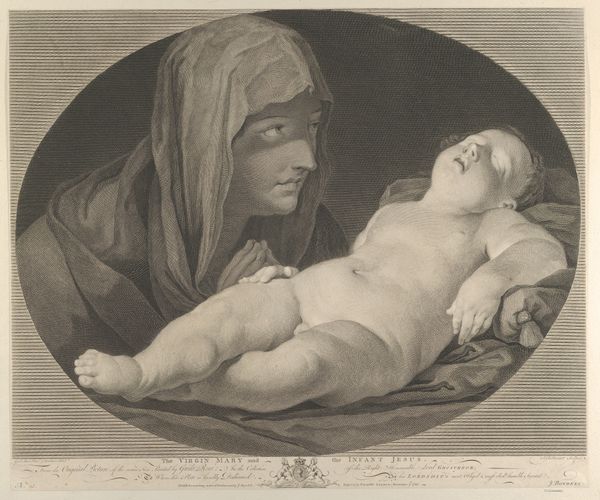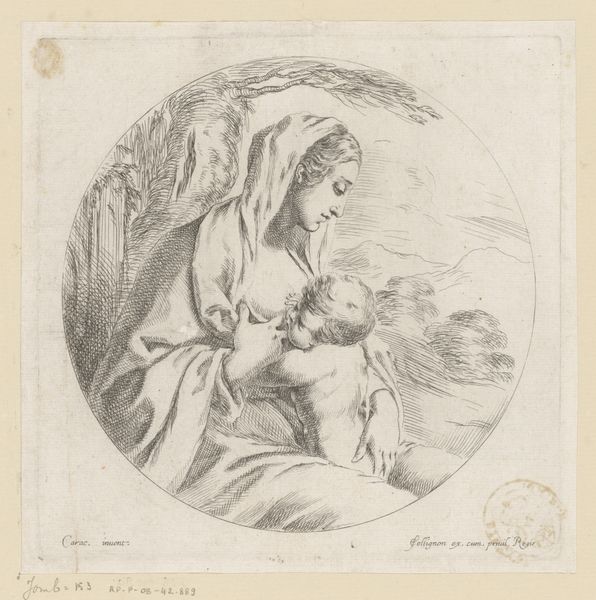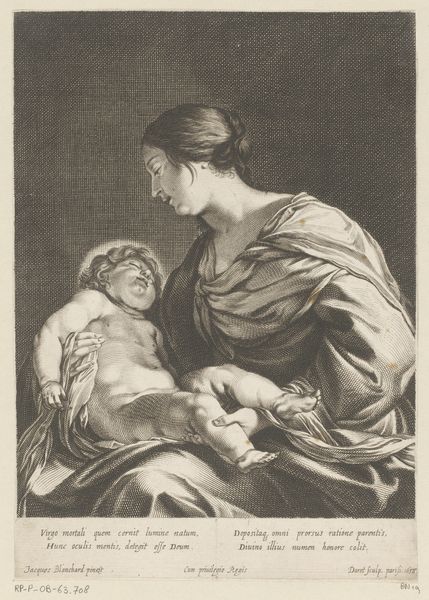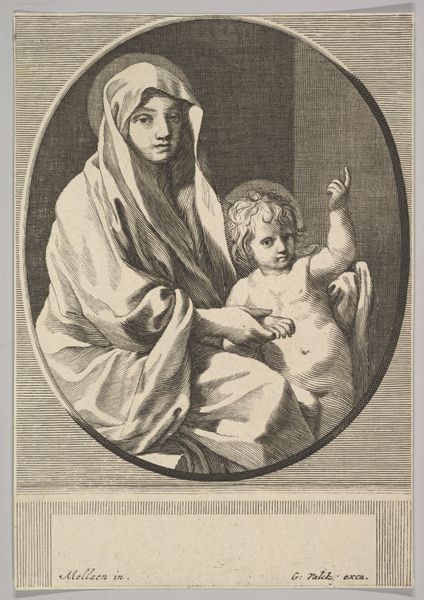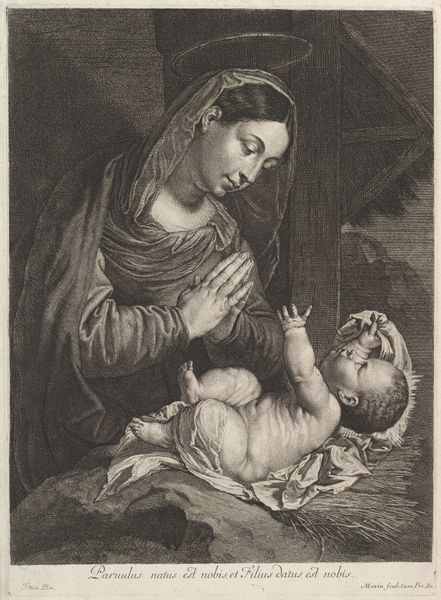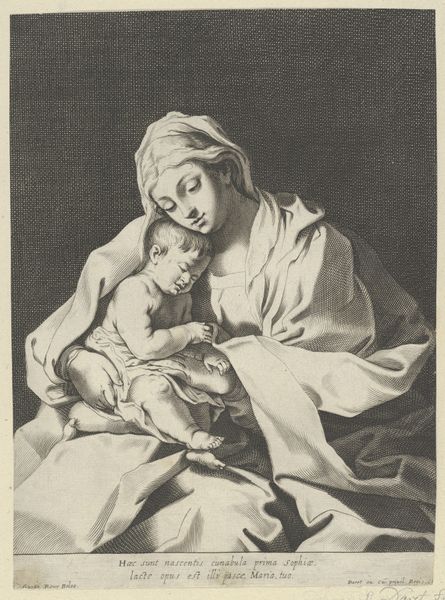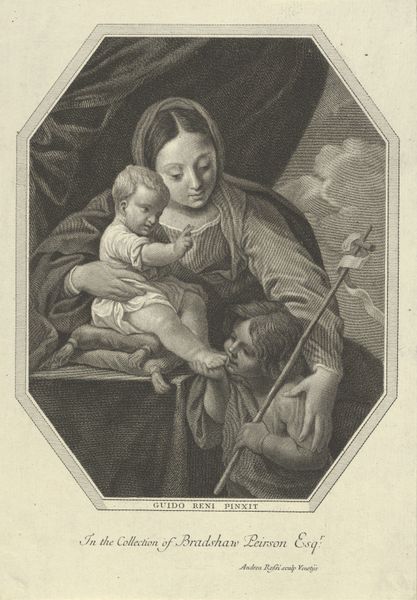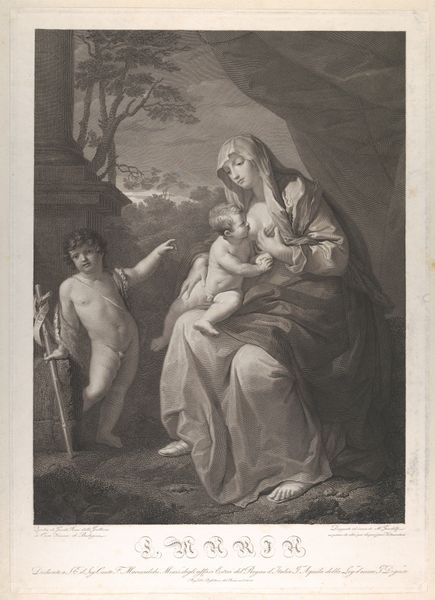
drawing, print, engraving
#
portrait
#
drawing
# print
#
history-painting
#
engraving
Dimensions: Sheet: 14 13/16 x 10 7/8 in. (37.7 x 27.7 cm)
Copyright: Public Domain
Curator: Before us, we have Robert Laurie’s 1772 engraving, "Virgin and Child," currently residing at The Metropolitan Museum of Art. Editor: My immediate impression is one of tenderness. There’s a quiet intimacy to the scene, amplified by the close proximity of the figures. Though printed, the softness and the light, makes one reflect on maternal comfort in eighteenth-century England, where a high infant mortality rate would underscore the stakes of the scene. Curator: Note the deliberate chiaroscuro effect Laurie employs, particularly in the draping of the Virgin’s robes. The interplay of light and shadow not only directs our gaze, but also serves to flatten and abstract portions of the image; a certain play with plane is subtly deployed here. Consider, too, how the oval frame emphasizes this composition, adding an element of artifice to an already carefully staged image. Editor: It is important to realize this work, while seemingly an intimate scene, would certainly reinforce existing societal expectations. Consider the Madonna archetype: a woman embodying pure motherhood and devout subservience. These images historically constrained and continue to influence expectations placed upon women, particularly regarding motherhood, devotion, and obedience, all themes intricately connected to broader religious, social, and political control. Curator: Certainly, a range of interpretive strategies can enrich our experience. If we analyze the work solely in terms of form, focusing on the artist's skillful use of engraving techniques, it would seem that Robert Laurie manipulates line and tone to achieve a striking depth. We witness a technical virtuosity. Editor: Understanding that technical skill only gains complexity when acknowledging it existed, as this print does, within specific socio-cultural frameworks that often serve ideological ends, can provide critical lenses when analyzing similar work. By examining its relationship to religious doctrines, and evolving concepts of womanhood in this period, its inherent biases and reinforcements become even clearer. Curator: Ultimately, Laurie’s composition shows not only a moment of respite but the culmination of many artistic traditions, carefully arranged with formal decisions meant to direct a viewer’s response. Editor: And these decisions have shaped how generations perceive motherhood, femininity, and power in relation to both. Recognizing these historical embeddings can sharpen how we engage with art now, asking critical questions about how visual forms influence, and sometimes, restrict, our own contemporary realities.
Comments
No comments
Be the first to comment and join the conversation on the ultimate creative platform.
